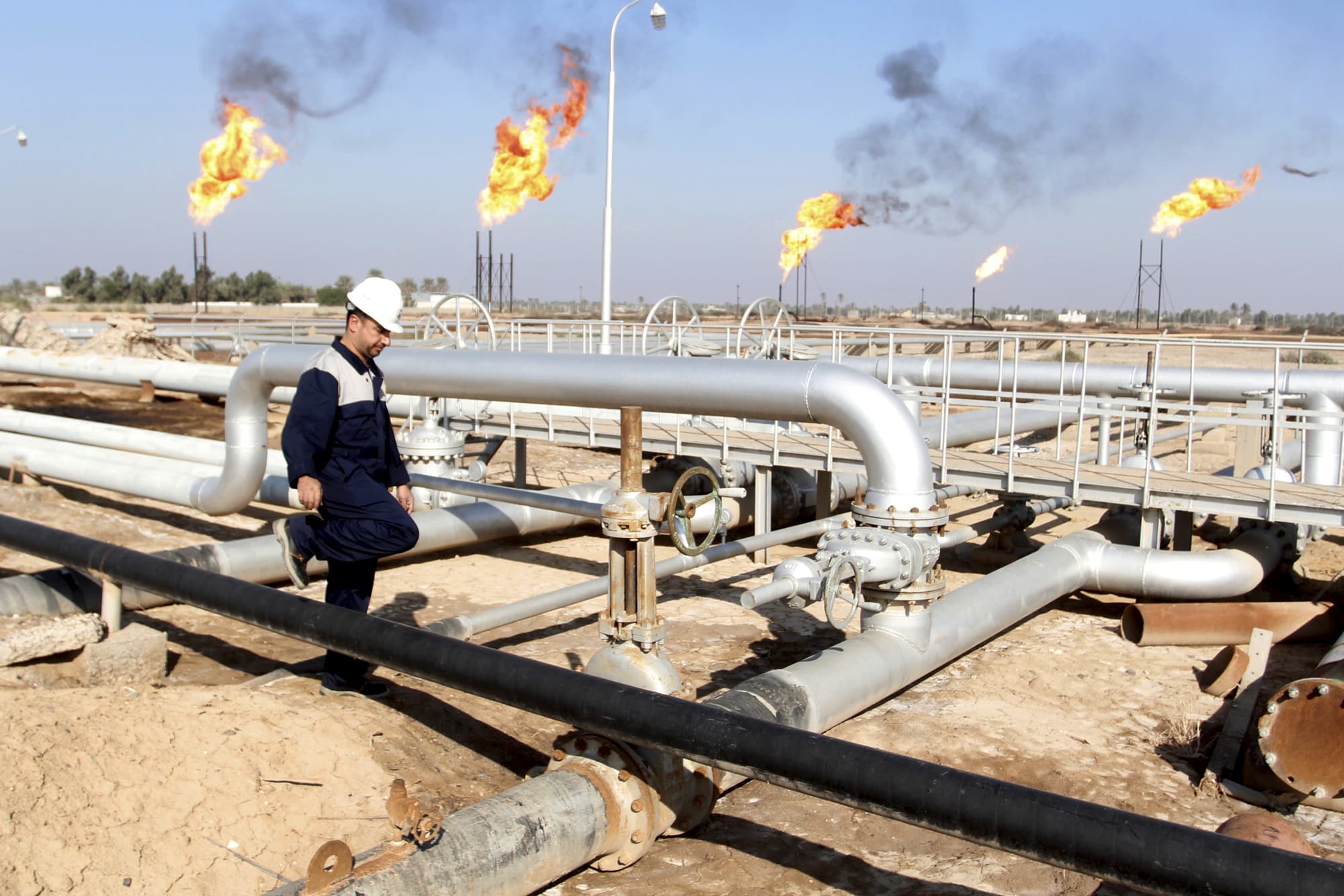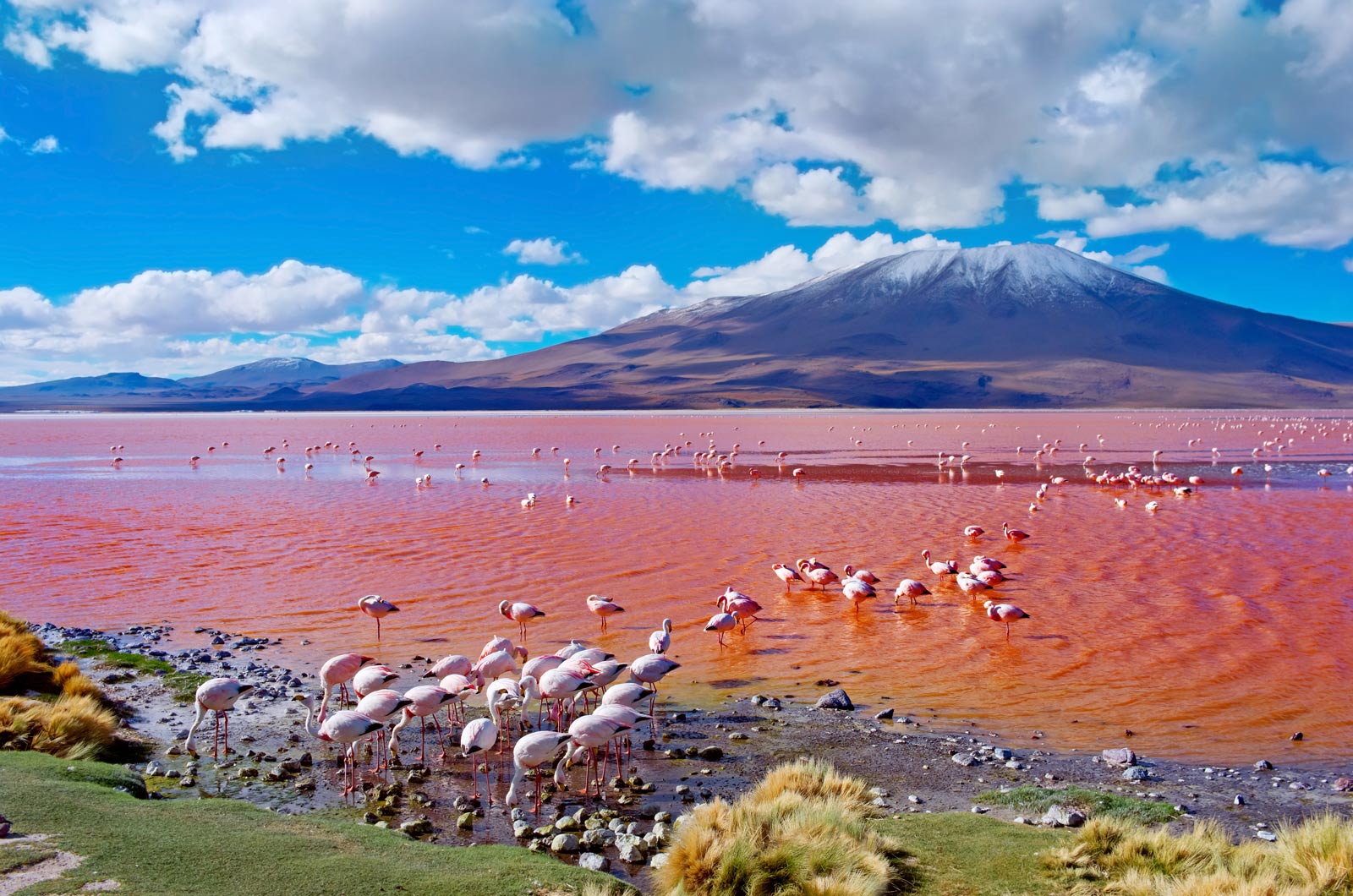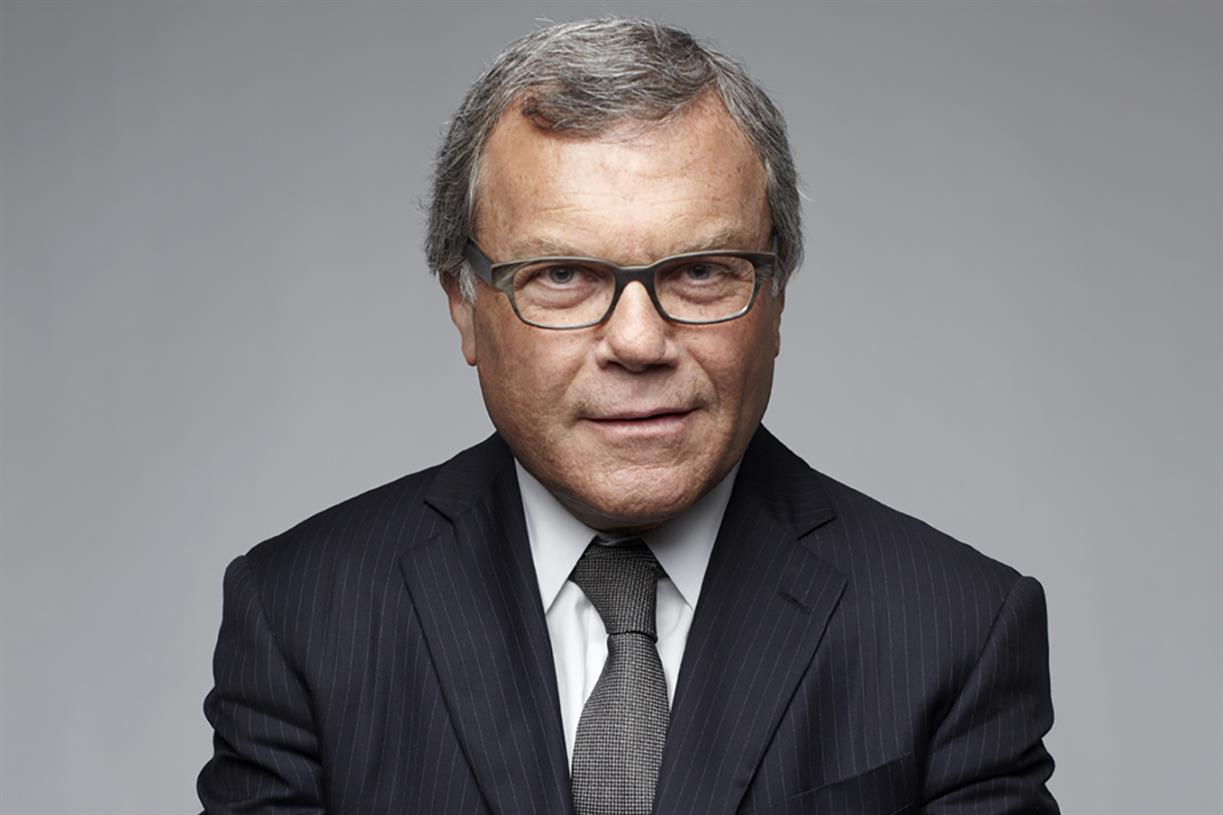Red Sea Coral Reefs – Understanding Its Rich Biodiversity
The Red Sea Coral Reefs are a vast and vibrant ecosystem thriving in the Red Sea, an inlet of the Indian Ocean. Its only natural connection to the ocean lies in the south, through Bab-el-Mandeb Strait and the Gulf...
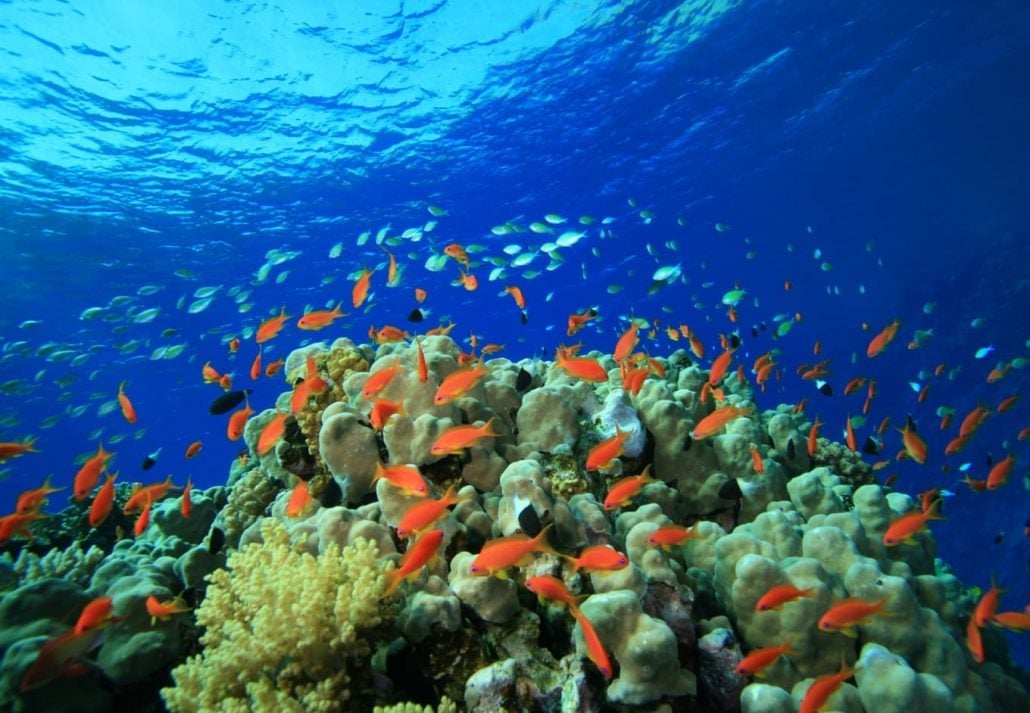
The Red Sea Coral Reefs are a vast and vibrant ecosystem thriving in the Red Sea, an inlet of the Indian Ocean. Its only natural connection to the ocean lies in the south, through Bab-el-Mandeb Strait and the Gulf of Aden. To its north lies the Sinai Peninsula, the Gulf of Aqaba, and the Gulf of Suez (leading to the Suez Canal).
A dominant part of the Red Sea coast is rimmed by the Red Sea Reefs that span 2,000 kilometers (1,240 miles) of shoreline, making it the largest coral reef system in Africa and the third largest in the world.
The Red Sea Reefs are truly ancient with some fringing reefs being over 5000-7000 years old. They are primarily made of Acropora and Porites (a type of stony corals) and form a complex network of platforms, lagoons, and even underwater structures like cylinders.
The unique coral reef ecosystem in the Red Sea is likely sculpted by powerful and unusual tectonic forces that have been shaping the region for millions of years and remain active even today.
Quick Jumplinks
What makes the Red Sea Coral Reefs special?
How can I experience the Red Sea Coral Reefs?
What is the current status of the Red Sea Coral Reefs?
Frequently Asked Questions
What makes the Red Sea Coral Reefs special?
Remarkable Biodiversity: The Red Sea Reefs boast over 1,100 species of fish and 200 species of hard and soft corals, with around 10% being endemic, meaning they are found nowhere else on Earth. This rich biological diversity makes the Red Sea a hotspot for marine life.

Heat Tolerance: Unlike most coral reefs worldwide that bleach and die in warmer waters, the Red Sea corals have adapted to the naturally high temperatures of the Red Sea, one of the warmest bodies of water on Earth. Some coral species have even been found thriving in waters exceeding 20°C, which was previously thought to be lethal for corals. This unique adaptation offers hope for the future of coral reefs in a time of global warming.
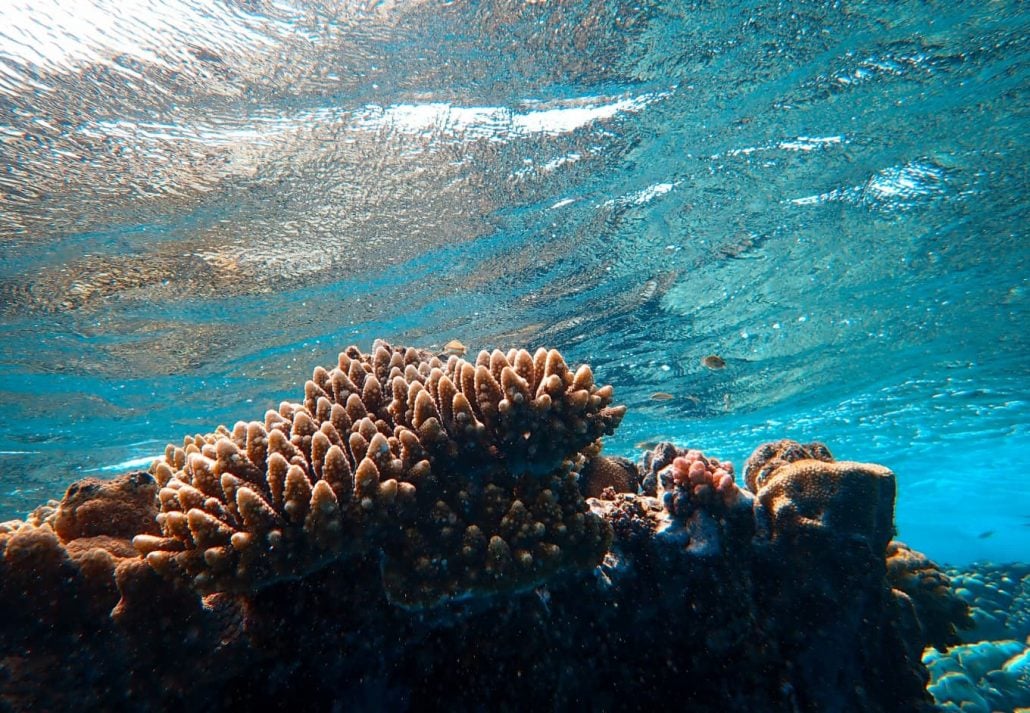
How can I experience the Red Sea Coral Reefs?
Snorkeling: This is a great option for those new to exploring deep-sea corals or those who prefer to stay closer to the surface. Snorkelers can simply put on a mask, fins, and a snorkel and swim along the reef, marveling at the coral formations and the fish that dart in and out of them. Many resorts and dive shops offer snorkeling trips to the Red Sea Reefs, and some even offer guided tours where you can learn more about the marine life you see.
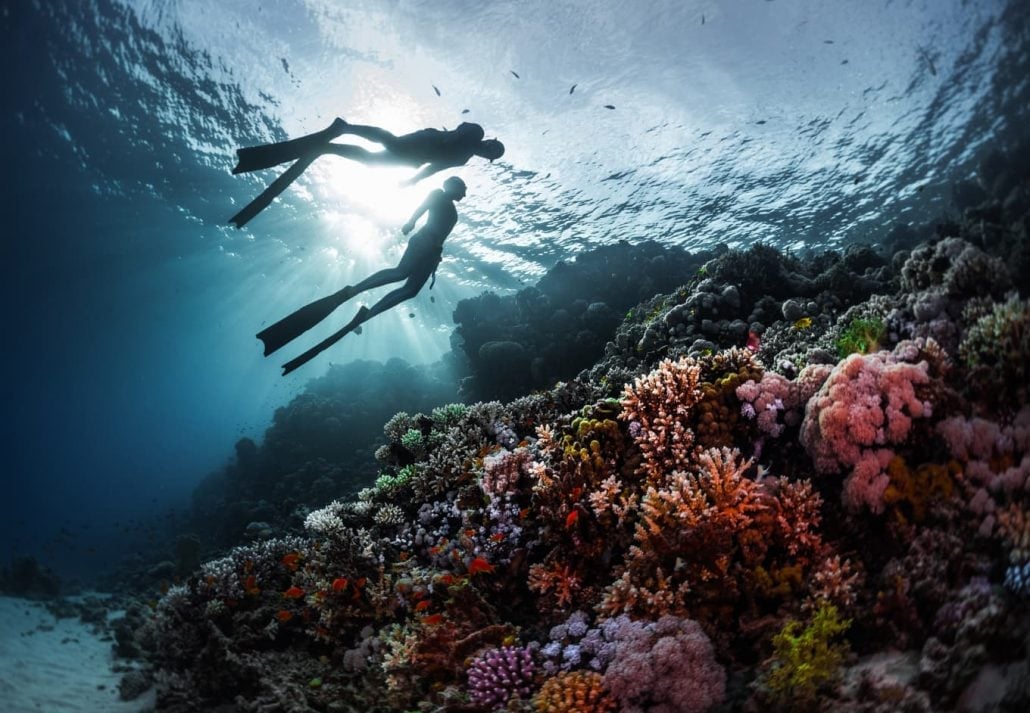
Diving: If you want to experience the Red Sea Reefs in all their glory, diving is the way to go. Divers can explore the reefs at greater depths, where they can see complicated coral formations and marine life. However, diving requires some training and certification. If you are interested in learning to dive, many dive shops in the Red Sea region offer courses for beginners.
Popular dive spots include Boiler Wreck, Cable Wreck, Ann Wreck in Jeddah, 84 Islands in the Farasan Islands, and Seven Sisters Dive and Abu Galawa in Yanbu. There are also numerous recreational dive spots along the reef including Ras Mohammed National Park. In the southernmost portions of the Red Sea, recreational diving is presently considered risky because of pirates from the uncontrolled zones of Somalia.
The Red Sea Project: This new development on the northwestern coast of Saudi Arabia is poised to become a premier diving destination to explore the Red Sea corals. While still under development, the Red Sea Tourism Project is expected to be completed in 2030. A highly anticipated development, it will be interesting to see how it reshapes Saudi’s luxury tourism while upholding its commitment to environmental conservation.
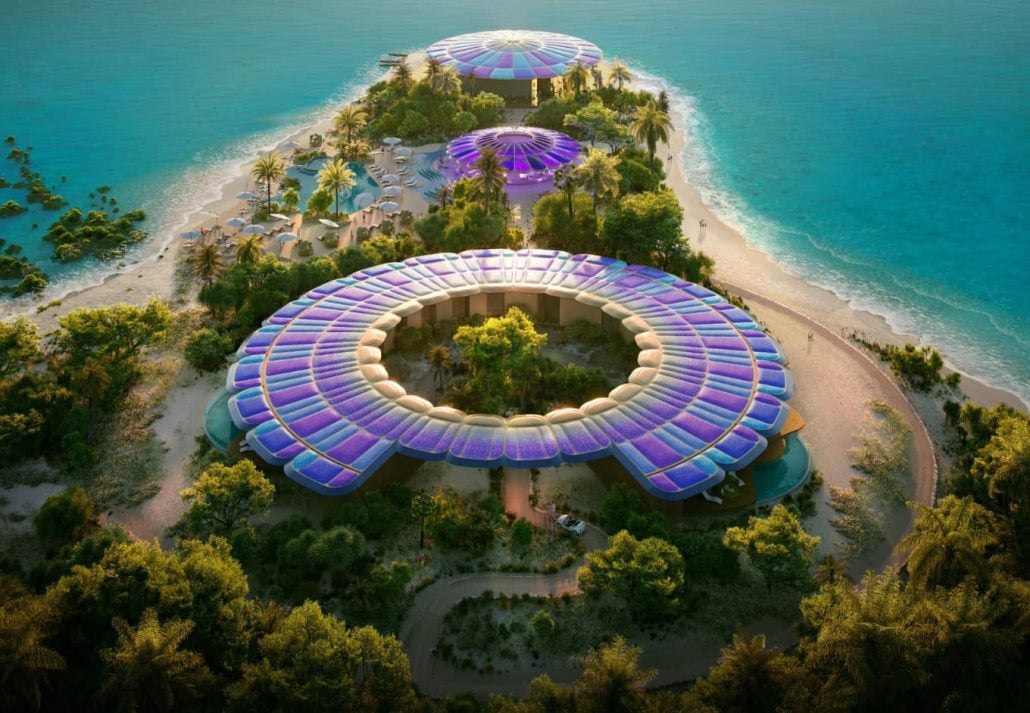 Photo Credit: Red Sea Global
Photo Credit: Red Sea Global
What is the current status of the Red Sea Coral Reefs?
The current status of the Red Sea reef systems is a complex interplay between remarkable resilience and significant threats. The Red Sea reefs are champions of heat, having adapted to naturally high temperatures. This provides a crucial advantage in a world facing rising sea surface temperature due to climate change.
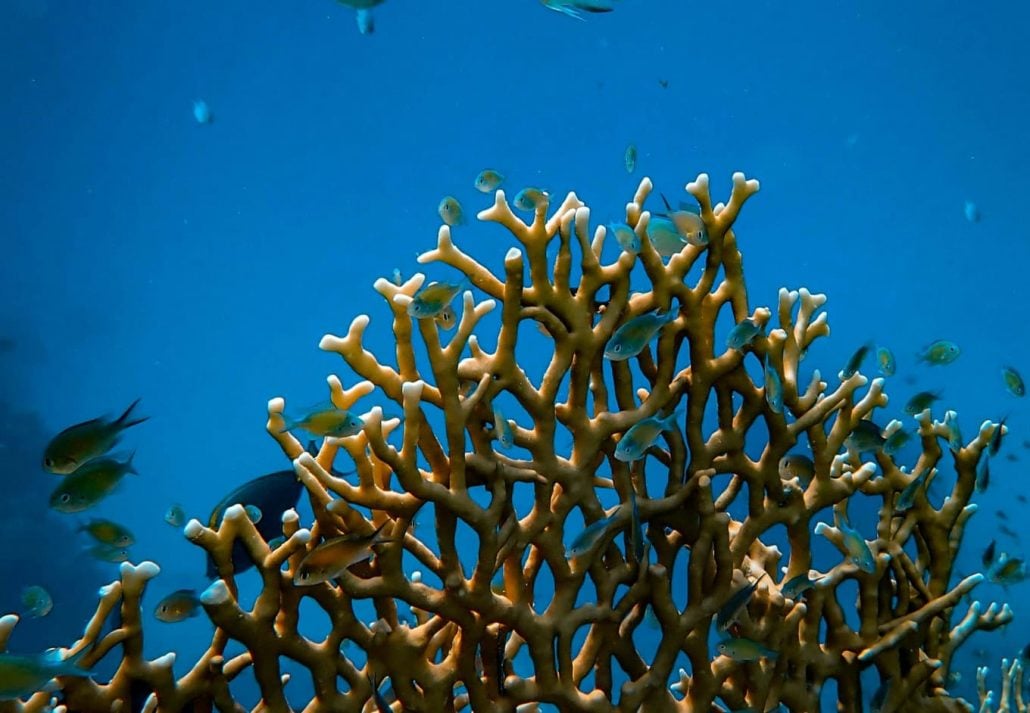
Challenges & Conservation Efforts
While coral resilience is evident, warming ocean temperatures remain a serious threat, with extreme temperatures still being able to trigger red sea coral bleaching. The Red Sea Reef ecosystems also face threats from overfishing, pollution, coastal development, and coral diseases that weaken and kill coral populations.
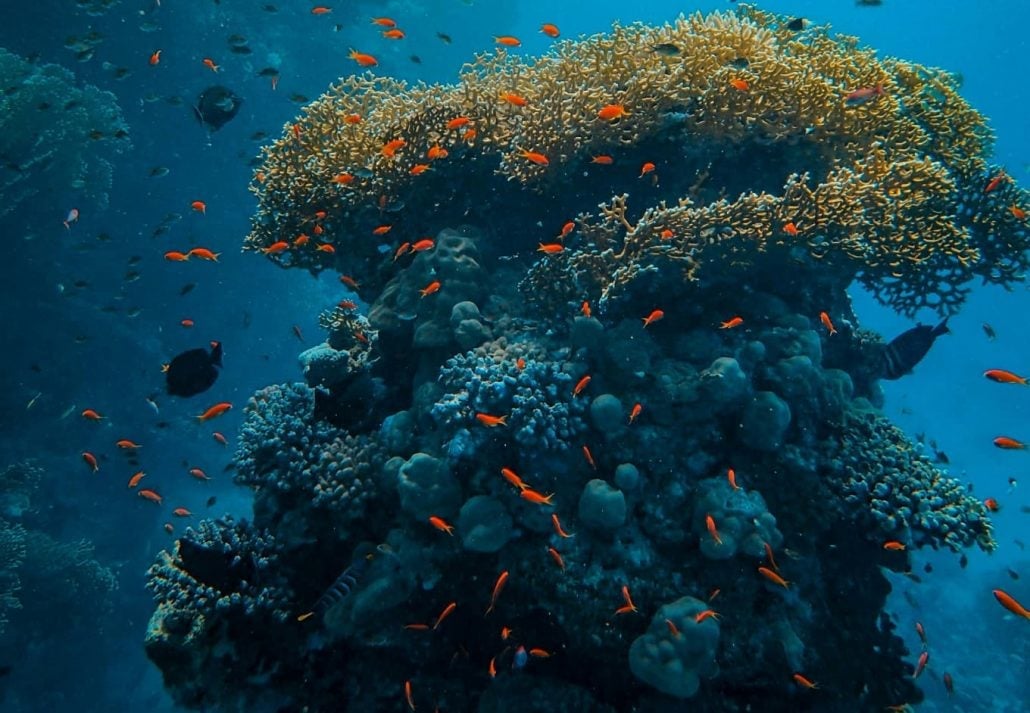
However, there are ongoing conservation efforts to protect these vital ecosystems. Scientists are studying these heat-tolerant corals to unlock the secrets of their resilience. This knowledge could be vital for coral reef refuge globally. Additionally, techniques like floating coral nurseries are being developed to cultivate heat-resistant corals and transplant them to damaged reefs, aiding reef conservation and restoration efforts.
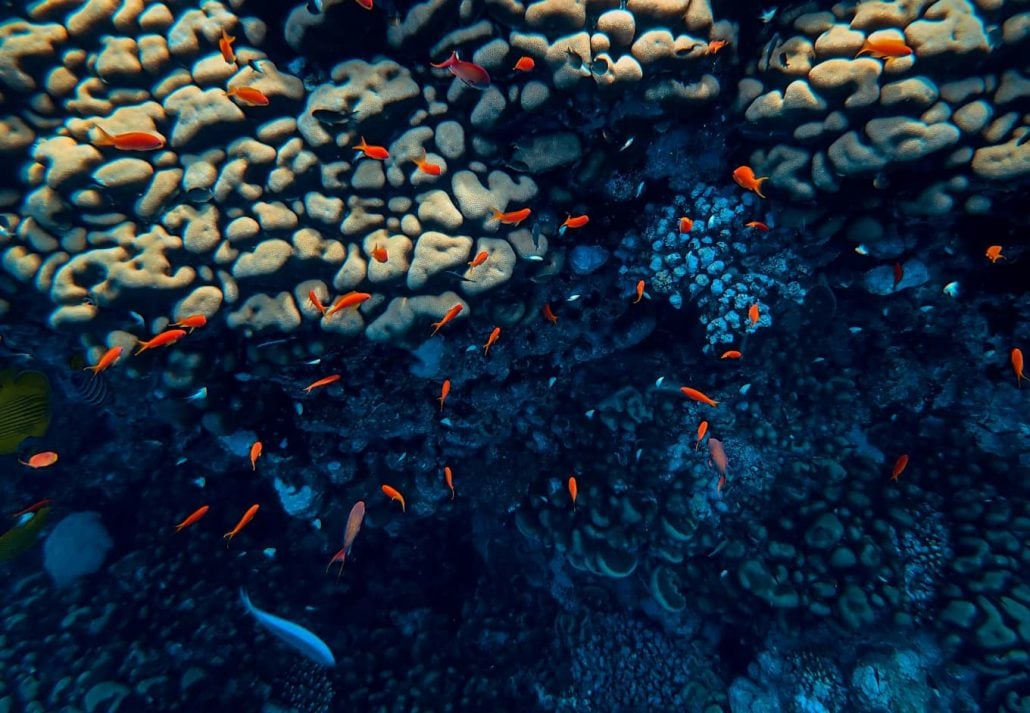
The Red Sea serves as a natural wonder and a valuable example, reminding us of the incredible potential for adaptation and the importance of protecting these irreplaceable underwater ecosystems. Understanding their unique properties and ongoing conservation efforts is crucial for preservation.
Frequently Asked Questions
How are the Red Sea Coral Reefs different from reefs in other oceans?
The Red Sea Coral Reefs are known for their exceptional resilience. While many reefs around the world suffer from bleaching due to ocean warming, the Red Sea corals seem to tolerate higher temperatures. Scientists are still researching the exact reasons behind this, but it may be due to unique adaptations or types of algae living within the coral.
What kind of marine life can be found in the Red Sea Coral Reefs?
The Red Sea Coral Reefs boast incredible biodiversity. Thanks to the healthy reefs, you can find a stunning variety of fish, including clownfish, angelfish, butterflyfish, and even sharks and rays. The coral structures also provide homes for invertebrates like sea turtles, octopuses, and colorful nudibranchs.
Are the Red Sea Coral Reefs in danger?
Unfortunately, despite their resilience, the Red Sea Coral Reefs are still under threat. Rising water temperatures due to climate change are a major concern. Additionally, pollution from coastal development and overfishing have been a major cause for concern.
What can be done to protect the Red Sea coral reefs?
There are several efforts underway to protect the Red Sea Coral Reefs. These include establishing marine protected areas, promoting sustainable fishing practices, and reducing pollution from coastal areas. Tourists can also play a role by choosing eco-friendly diving and snorkeling companies that prioritize coral restoration and reef conservation.
Can I still see a healthy coral cover in the Red Sea?
Yes, there are still many areas in the Red Sea with thriving coral reef ecosystems. The Saudi Arabian Red Sea coast, for example, boasts some spectacular reefs. However, it’s important to choose responsible tourism operators who prioritize coral growth and reef health.
CuddlyNest provides all accommodations to all travelers at the best price. Find unlimited travel inspiration on our blogs and social media channels Facebook, Instagram, and Pinterest.
Recommended Reads:
Green Riyadh Project In Saudi Arabia
Jeddah Corniche on the Red Sea
The AMAALA Project In Red Sea
Top Projects In Riyadh

 ValVades
ValVades 







